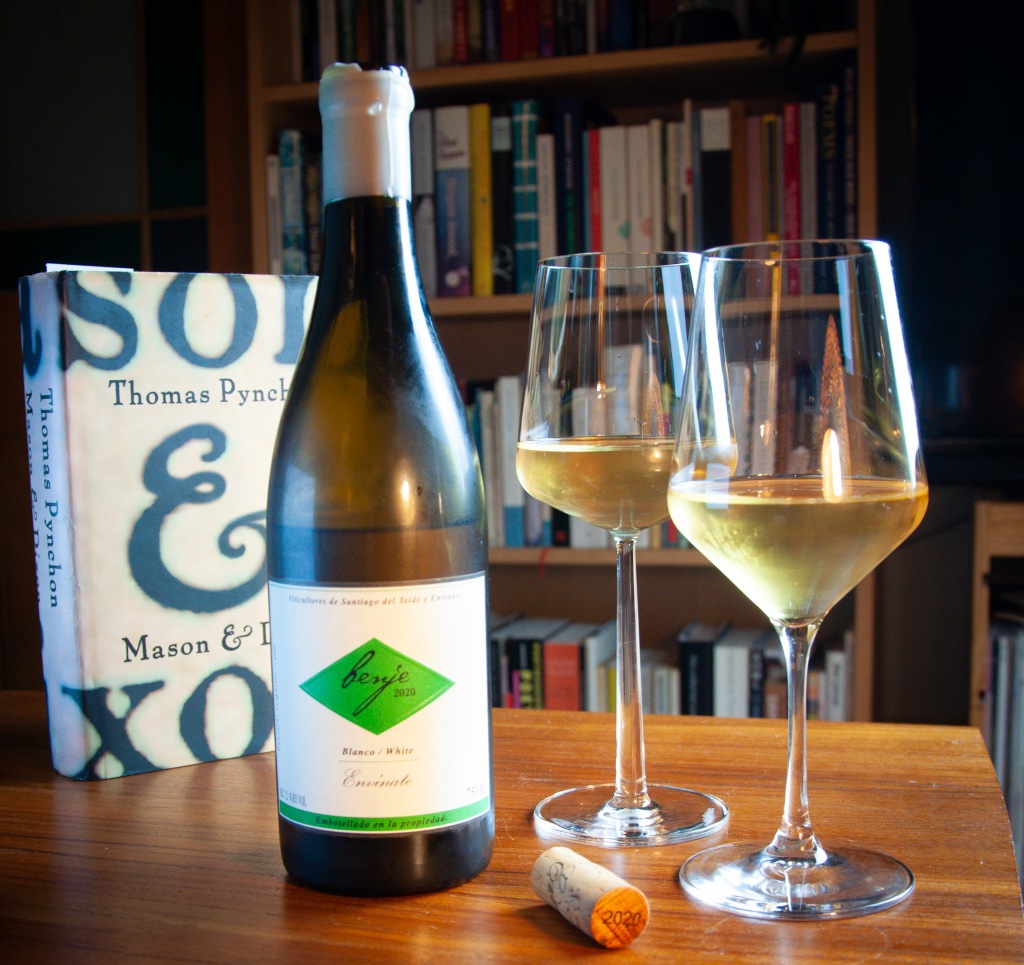Are we getting late in the game here? The list of empty bottles grows lengthy. But plenty remain uncracked too (even some low-hanging fruit—rum and coke!). And of course there is always the possibility of a new novel descending, pages humid with ethanol. Plus no one could accuse me of setting a cracking pace. This project may yet last a lifetime.
Even so, we are often these days sipping from paragraphs previously supped. Today, we return to the fertile earth of the Cock Ale.
As you will recall, the Cock Ale is concoc(k)ted by the barman of a punch house on St Helena island, one Mr Blackner. Jeremiah and Charles visit him there and sample the stuff early in Mason & Dixon. In a departure from the standard recommendation, Mr Blackner uses Málaga wine to soak the fruit bits to complement the chicken in his recipe. Here’s a reminder:
Mr. Blackner prefers to soak the necessary dried Fruit Bits in Mountain, or Málaga Wine, instead of Canary, and to squeeze the Carcass dry with a cunning Chinese Duck-Press, won at Euchre from a fugitive aristocrat of that Land, in which Force may be multiplied to unprecedented Values extracting mystick Humors not obtain’d in other Receipts.
Mason & Dixon, p. 120.
Not only have we already drank the cock ale, we’ve also tried the Málaga that Mr Blackner’s using to soak its constituent fruit bits. All that remains for us today is the spurned traditional fruit-bit-soaker: the Canary wine.

The Canary Islands are a Spanish territory off the coast of Morocco. They were arguably the site of the first instance of European settler-colonial intrusion into Africa. The arrival of the Castilians and Spanish throughout the 15th century brought genocide, enslavement, and the other attendant horrors of colonialism. More trivially, they also brought wine grapes. Sweet, fortified Canary wine was a major export throughout the 16th and 17th centuries, with some of that product evidently ending up in cock ales.
According to Wine Enthusiast, demand for these wines dipped in the 18th century as drinkers turned to continental product (perhaps everyone was following Mr Blackner and swapping Canary for Málaga). But the grapes kept growing, and the Canaries are producing some very interesting wines today.
I’ve procured a 2020 Envinate Benje Blanco, made from the classic Canary grape Listan Blanco grown in the volcanic soils of the main island of Tenerife. Listan Blanco is often used in sherry, and would have been well suited to the sweet, fortified Canary style recommended for your cock ale. This bottle, however, is decidedly more modern. It is wild fermented and partially left on skins for an extended period, lending it a compelling golden hue. It has a zippy acidity, moderate funk, and a good whack of oxidative grip. There’s plenty of peach and passionfruit, as well as grapefruit and preserved lemon, but also a stemsy, slightly olivey note, and a definite salinity. It’s a complex, textured, savory delight.
It also tastes completely unsuited for soaking raisins in to make a chicken beer. Mr Blackner was very wise to go with the Málaga instead.

